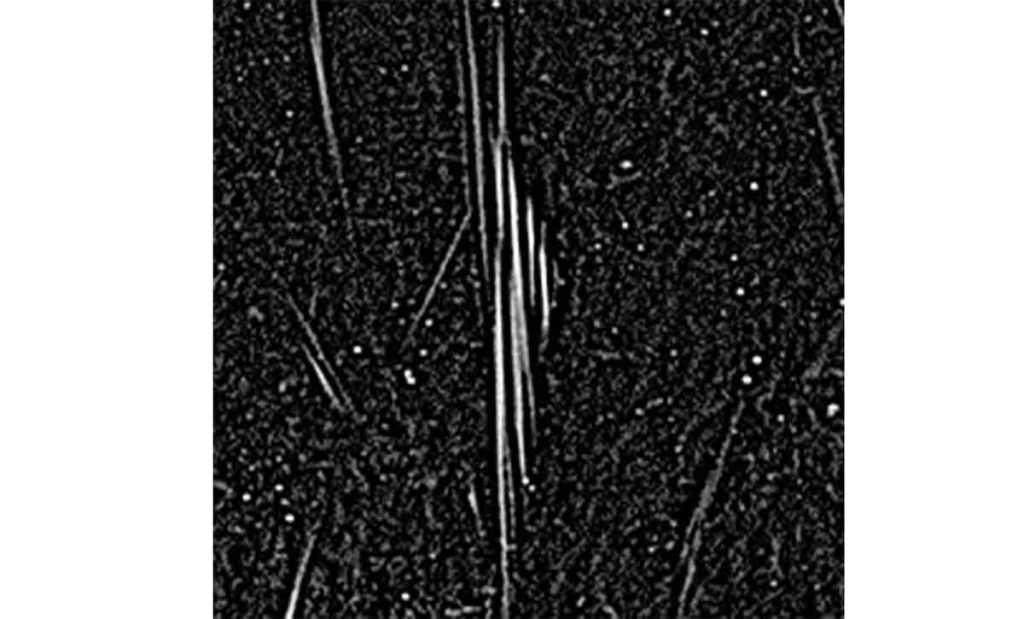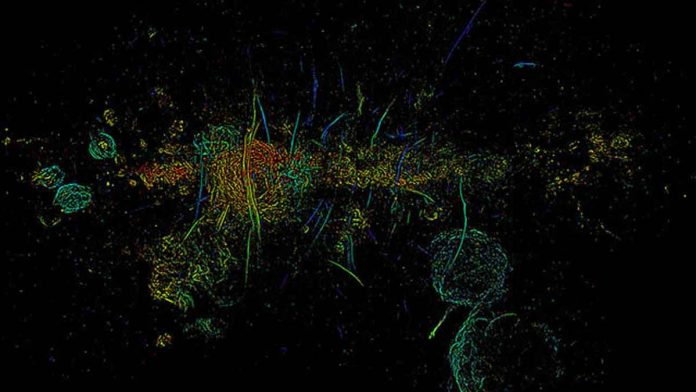An unprecedented new telescope image of the Milky Way galaxy’s turbulent centre has revealed 1,000 mysterious strands. They all were inexplicably dangling in space.
These stretched up to 150 light years long. The one-dimensional strands are found in pairs and clusters. They often stacked equally spaced and side by side like strings on a harp. North-western University’s Farhad Yusef-Zadeh have used observations at radio wavelengths and discovered magnetic filaments in the early 1980s. Zadeh found the mystifying filaments comprise cosmic ray electrons gyrating the magnetic field at close to the speed of light. But their origin has remained an unsolved mystery ever since.
The image has exposed 10 times more filaments than previously discovered. This enabled Yusef-Zadeh for the first time conduct statistical studies across a broad population of filaments. This information can help them finally unravel the long-standing mystery.
The study has been published in The Astrophysical Journal Letters.
Yusef-Zadeh is a professor of physics and astronomy at Northwestern’s Weinberg College of Arts and Sciences. He is also a member of the Centre for Interdisciplinary Exploration and Research in Astrophysics (CIERA).
Constructing the image
Astronomers spent three years surveying the sky to construct the image with unprecedented clarity and detail. They have analysed the data at the South African Radio Astronomy Observatory (SARAO). They have used 200 hours of time on SARAO’s MeerKAT telescope. Scientists pieced together a mosaic of 20 separate observations of different sections of the sky toward the centre of the Milky Way galaxy. This is 25,000 light years from Earth.
The full image will be published in an additional paper. This will be led by Oxford University astrophysicist Ian Heywood and co-authored by Yusef-Zadeh. It will be published in a forthcoming issue of The Astrophysical Journal. The image captures radio emissions from numerous phenomena. This includes out bursting stars, stellar nurseries and new supernova remnants.
Yusef-Zadeh’s team used a technique to remove the background from the main image to view the filaments at a finer scale. They wanted to isolate the filaments from the surrounding structures.
What we know
Yusef-Zadeh has been able to piece together more of the puzzle. He explored the filaments’ magnetic fields and the role of cosmic rays in illuminating the magnetic fields.

The variation in radiation emitting from the filaments is very different from that of the newly uncovered supernova remnant. This suggests that the phenomena have different origins. Scientists found the filaments are related to past activity of the Milky Way’s central supermassive black hole. The filaments are related to enormous, radio-emitting bubbles. These Yusef-Zadeh and collaborators discovered in 2019.
Yusef-Zadeh already knew the filaments are magnetized. He said magnetic fields are amplified along the filaments. This is a primary characteristic all the filaments share.
What we don’t know
Yusef-Zadeh is puzzled by how structured the filaments appear. As filaments within clusters are separated from one another at perfectly equal distances. Yusef-Zadeh does not know whether the filaments move or change over time. He also does not know what is causing the electrons to accelerate at such incredible speeds.

